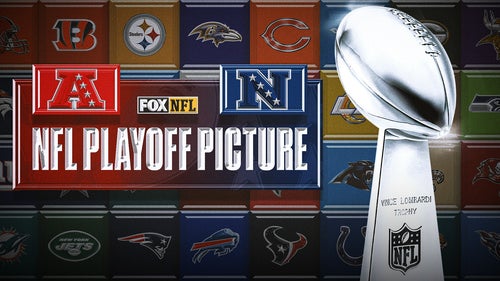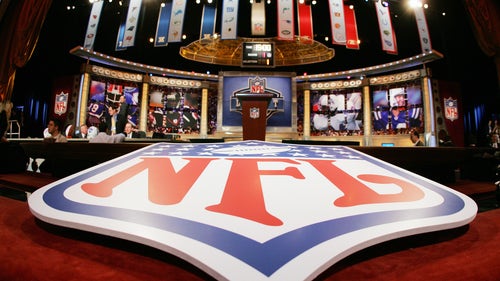
Tire tracks are focus of testimony at Aaron Hernandez trial
Four stones wedged into the rear passenger-side tire on a Nissan Altima rented to Aaron Hernandez helped investigators match it to a tire track left at the scene of Odin Lloyd's body.
Those stones created what Trooper Todd Girouard of the Massachusetts State Police described as "anomalies" in the tread pattern of the tire -- and those lined up perfectly with close-up photographs of the track from the scene, the trooper testified Thursday in Hernandez's murder trial.
Prosecutors allege that Hernandez was driving the Altima when he and two accomplices picked up Lloyd in Boston, then traveled to a secluded field in North Attleboro, Mass. There, early the morning of June 17, 2013, Lloyd was shot and killed.
Girouard, beginning his second day of testimony, told jurors that the first order of business was to compare the tires from the Nissan to life-size photos of the tire track from the murder scene. The goal: To see if the tires on the car could have left the track.
Discussing tire characteristics such as "grooves," "sipes," and "wear bars," Girouard said that he eliminated the Nissan's two front tires as the source of the tracks because the design was so different. But he also concluded that the two rear tires were of the same design as the one that left the track, and he and other troopers inked the rear tires and rolled the car over a strip of clear film, creating something that looked almost like an 8-foot-long fingerprint.
Girouard said he also looked for random, individual characteristics left "when something is taken away or introduced -- stones, a piece of bubble gum, nails, rocks, a twig."
"As a tire's going through its so-called life, it's changing," Girouard said.
That analysis led to the discovery of the anomalies in the track at the scene that matched the inked impression of the tire, a silicon mold of it and even the tire itself. At one point, prosecutors hoisted the Nissan's right rear tire onto a table and Girouard pointed out the exact rocks he believed left impressions in the track at the scene.
Jurors also saw close-up photos of the track, the inked impression, the tire and the molds as Girouard described
After more than an hour on the stand, prosecutor Brian Griffin asked Girouard whether he had formed an opinion about the Nissan's tire and the track found at the murder scene.
"It made the impression," Girouard said.
He went on to testify he had specifically excluded the Nissan's other rear tire.
When defense attorney James Sultan got the chance to question Girouard, he attacked the trooper's training and experience, noting that he had taken only one 4 1/2-day training course on tire impression evidence, had previously worked on only 15 tires, and had never before testified in court about tire track evidence.
He also pushed the idea that tire track evidence is "largely subjective" -- something Girouard disagreed with.
"You're telling us about your opinion not anybody else's opinion, correct?" Sultan asked.
"That's correct," Girouard said.
Sultan also suggested the inked tire impression was not reliable because there was only one person in the car when Girouard and other troopers made it -- and prosecutors allege that four people were in the Nissan at the murder scene.
And he asked Girouard whether he knew how many tires of the same size and design were on the road in 2013 -- and how many of them would have had rocks in the same four locations.
Girouard said "no" to both questions.
The prosecution alleges that Hernandez "orchestrated" Lloyd's murder, arranging to meet him and at the same time summoning two associates, Ernest Wallace Jr. and Carlos Ortiz, from Bristol, Conn., to his home in North Attleboro, Mass., late the night of June 16, 2013. From there, the trio allegedly made the roughly hour-long drive to Boston, where they picked up Lloyd, and then returned to North Attleboro.
Lloyd was killed in a gravel pit less than a mile from Hernandez's home.
Hernandez faces one count of murder and two firearms charges in the slaying of Lloyd, a semi-professional football player who was dating Shaneah Jenkins, the sister of Hernandez's fiancee.
Prosecutors have not said who they believe fired the fatal shots, and Ortiz and Wallace have also been charged with murder and will be tried separately.
Under a Massachusetts law known as "joint venture," a person can be convicted of murder even if someone else carried out the actual killing. To prove that, prosecutors would have to convince the jury that Hernandez knowingly participated in the killing and did so with intent.
Also Thursday, jurors heard another round of detailed testimony about cell phone data – this time it was focused on Lloyd’s phone and his movements from the time he was picked up at 2:32 a.m. on the day of the murder until the shooting, which is alleged to have occurred less than an hour later.
Patrick Quinn, an engineer with T-Mobile, walked jurors through the movement of Lloyd’s phone – both from texts he sent and from data updates to programs or applications on it.
Using maps and company records, prosecutor Patrick Bomberg walked jurors through a visual presentation on Lloyd’s movements in a story told by cell tower data. The phone, Quinn testified, headed west out of Boston on Interstate 90, then south on I-95 toward North Attleboro.
When Lloyd sent his last text message to his sister at 3:23 a.m., his phone connected with a tower in the North Attleboro Industrial Park.
Prosecutors allege he was shot to death in that park about four minutes later.
At least 11 times in the next 12 hours the phone connected to that same tower for data updates – evidence that Lloyd’s body was where it was ultimately found all that time.
Hernandez has separately been indicted on multiple murder and assault charges in a July 16, 2012, shooting in South Boston that left two men dead and another wounded.
In the Boston killings, prosecutors have alleged that Hernandez became enraged after a man bumped him on a nightclub dance floor, spilling his drink, and failed to apologize. They alleged that Hernandez later followed the man and his friends as they drove away from the club, then pulled up next to their car at a stoplight and opened fire with a .38-caliber revolver, killing Daniel De Abreu, 29, and Safiro Furtado, 28, and wounding another man.
That trial originally was scheduled to begin May 28, but the judge there indicated recently he would push it back given the anticipated length of the trial in the Lloyd case. No new trial date has been set.










